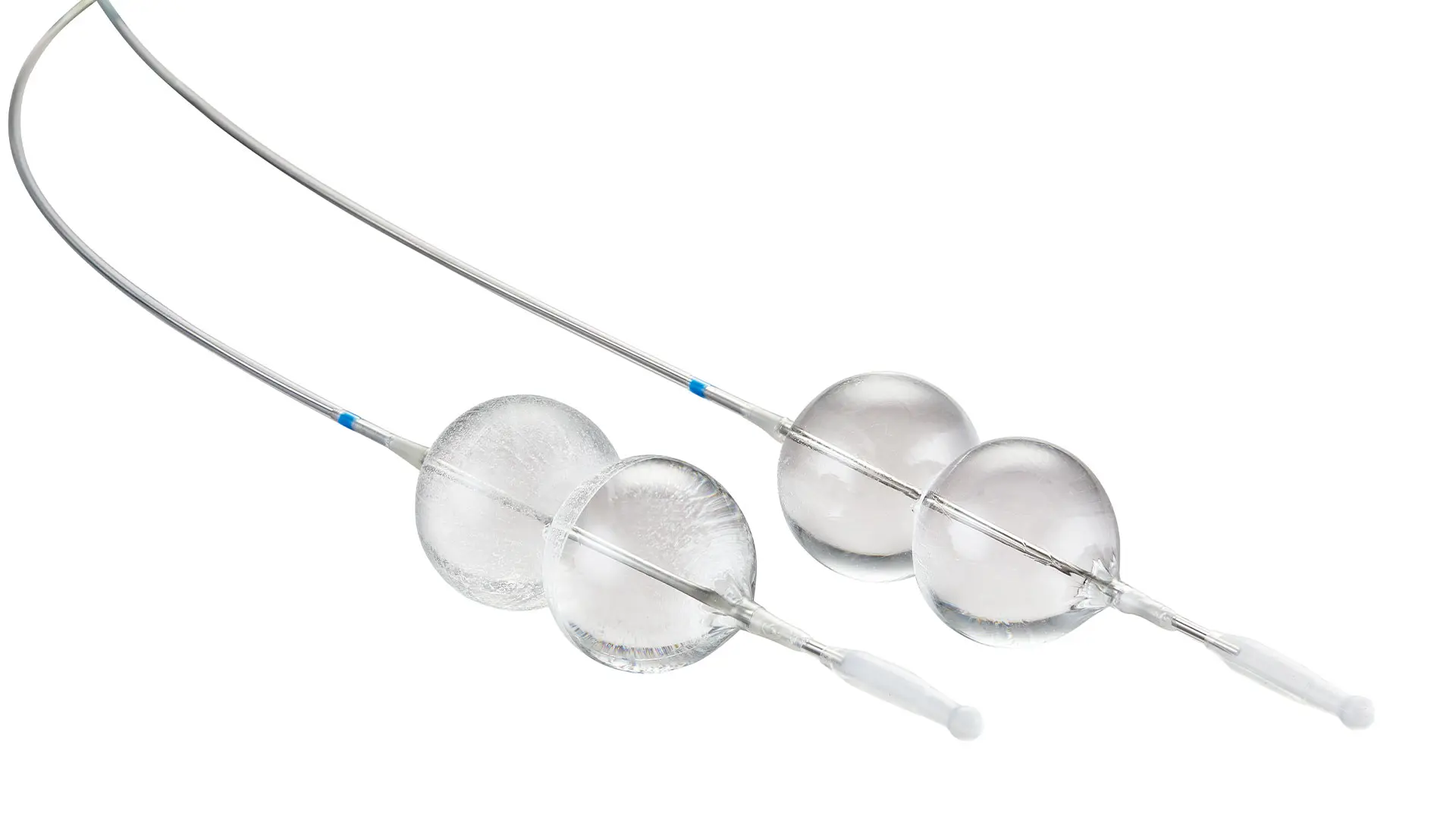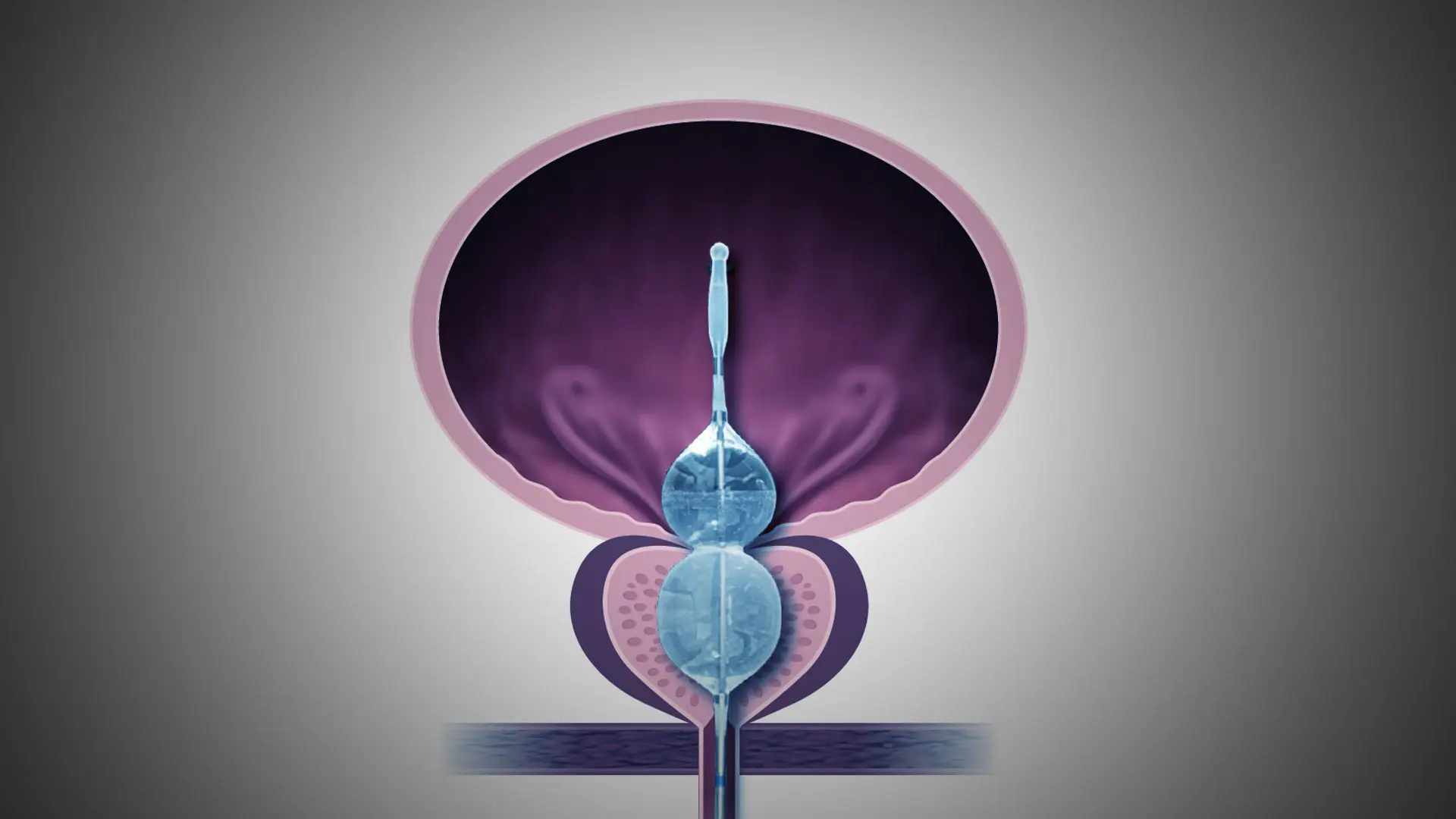While Aquablation® continues to gain traction as a highly effective therapy for benign prostatic hyperplasia (BPH), another innovative treatment option using drug-coated balloon technology moved closer to commercialization, thanks to innovations and research at Mount Sinai.
In September 2023, the Journal of Urology featured on its cover positive findings from the PINNACLE trial on the balloon-based Optilume® BPH Catheter System from Urotronic, Inc., for treating lower urinary tract symptoms (LUTS) secondary to BPH.
“What makes this new therapy so exciting is that it offers a safe, effective, and minimally invasive procedure for men suffering from urinary tract conditions such as BPH and urethral strictures,” says Steven Kaplan, MD, FACS, Professor of Urology at the Icahn School of Medicine at Mount Sinai and Principal Investigator of the PINNACLE trial. Dr. Kaplan, who is Chair of Research for the American Urological Association (AUA), was also a pioneer in developing Aquablation therapy.

The Optilume BPH Catheter System is a unique minimally invasive surgical therapy that combines mechanical dilation using a propriety double-lobe balloon concurrently with localized delivery of paclitaxel for the treatment of LUTS secondary to BPH. Photo: Laborie Medical Technologies
“Because of the outstanding results this drug-coated device has shown, I believe it will change the playing field for what urology can accomplish through a simple outpatient procedure,” says Dr. Kaplan, who is also Director of the Men’s Wellness Program.
Approved in July by the U.S. Food and Drug Administration, the Optilume BPH Catheter System is a unique minimally invasive surgical therapy (MIST) that combines mechanical dilation using a propriety double-lobe balloon concurrently with localized delivery of paclitaxel for the treatment of LUTS secondary to BPH. Mechanical dilation with the Optilume BPH Catheter System achieves an anterior commissurotomy, while delivery of paclitaxel maintains a luminal patency during healing.
Data from the PINNACLE study showed that patients treated with the system had an average reduction of 11.5 ± 7.8 points in their International Prostate Symptom Score (IPSS) at one-year, compared to an average reduction of 8.0 ± 8.3 points at three months in the sham arm. Moreover, change in peak urinary flow rate (Qmax) was also greater at 12 months among patients in the Optilume BPH arm compared to the three-month Qmax among patients in the sham arm.
“The symptom improvement we saw with Optilume BPH is comparable to that reported for other MISTs in similar patient populations,” Dr. Kaplan says, “while the improvement seen in flow and post-void residual urine volume represents the best seen for this technology class. We believe data such as these will quickly establish the therapy as a new standard for delivering rapid and sustained results.”

Steven Kaplan, MD, FACS, Professor of Urology at the Icahn School of Medicine at Mount Sinai and Director of the Men’s Wellness Program
Aquablation has been doing precisely that over the past four years, becoming the fastest growing treatment for BPH. Mount Sinai was one of the first users in the United States of the minimally invasive procedure, and remains among the most prolific with 250 cases handled. Dr. Kaplan plans to soon launch a clinical trial for Aquablation in treating prostate cancer. The cutting-edge technique combines a camera, ultrasound imaging, and a computer-controlled, heat-free waterjet to enable efficient and accurate removal of prostate tissues in the doctor’s office.
To help ensure that the field continues to benefit from advances such as Aquablation and Optilume BPH, Dr. Kaplan created AUA Innovation Nexus, a forum to promote urologic discovery and improve patient care. The incubator-like initiative combines brainstorming sessions, mentorship opportunities, networking, expertise-sharing with business executives, and access to investors.
These diverse opportunities coalesced at the first Innovation Nexus conference in April 2023 in Chicago. Among the activities was a showcase event giving a number of urology start-ups the chance to unveil their innovations before a large audience, and a “reverse pitch” in which the industry was given the opportunity to broach the kinds of real-world problems they are interested in solving. The Innovation Nexus Conference was followed in September by an “Innovation Boot Camp” at AUA headquarters in Maryland, featuring workshops on how to move a novel idea from concept to realization.
“The whole idea behind Innovation Nexus is to get a broad range of people actively involved in bringing bright ideas forward,” says Dr. Kaplan. “It’s like a Harvard Business School course for urologic entrepreneurs, and the great thing is that people can access it throughout the year.”
